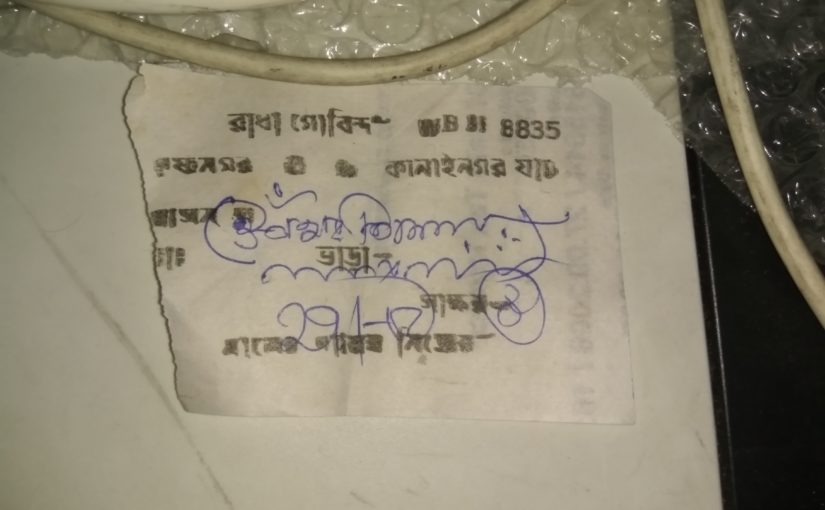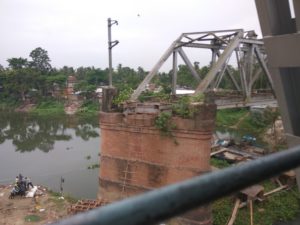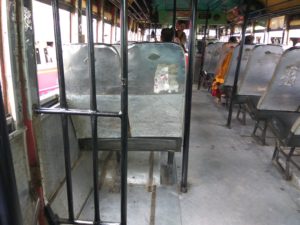We love comforting narratives that instill in us a sense of schadenfreude, especially the type that tell us that we are doing better than the ones we don’t like. Maybe not a whole lot better, and maybe the guys we dislike are still way ahead of us. But we still tend to take pleasure in thinking they aren’t doing that great right now, and we are.
This is the familiar narrative that the China-India economic competition has fallen into. Time was when we used to look the other way when questions of Chinese economic growth came up. Both the countries were growing, but one was growing steadily and had a head start. You’d say that was India based on history, but it was really China. In fact, ever since the reforms that occurred roughly around the time of Tiananmen Square, their economy has been growing rapidly.
Gone were the days of Mao, when the peasant was all that was there to China. Within decades, this peasant utopia had transformed itself into the manufacturing hub of the world. Countries, ranging from the US to even India, outsourced their production to China. Initially it was just the small and simple stuff – nuts and bolts if you like – that came from China. The Chinese picked up the tab themselves, eventually manufacturing such stuff themselves and pushing it into other emerging markets like India, Indonesia, Vietnam and others.
Those were the days when you would disparage Chinese goods for their poor quality and still lower pricing. But India is famous for lapping up anything that is cheap, regardless of what it may do for competitors’ pockets or their own health. So we lapped up all the Chinese “branded” – fake branded that is – flashlights, toys, plastic equipment and so on. These were things India could easily make, but we simply preferred to import from China, often through dubious routes through Nepal and the North-East.
Over time, the orders from international buyers grew, including the humble ordinary Indian, and China could afford to upgrade its know-how. It began making motherboards, chipsets, sophisticated electronics and so on. For Western countries, initially. Then, as would be inevitable, it began making these on its own. Manufacturers like Foxconn, which produced goods for Motorola and Samsung, began to produce goods for Chinese startups like Huawei, Xiaomi, Oppo, and so on. I’m naming only smartphone companies here because they seem to be the most glamorous, but this know-how has spread to virtually every part of the manufacturing sphere.
Over time, this ensured that China was able to generate a steady income and produce more and more jobs for its humungous population. Along with its one-child policy, this ensured that support for the Communist regime survived, along with hundreds of people who lived on meagre wages. Sweatshops became a special feature, though even here change was apparent. Wages rose, the state gradually began regulating the market. Despite the significant leeway that the Chinese government still provided (including subsidies), these ensured that living standards rose and prosperity grew.
It also meant production costs went up. China was faced with the problem of ensuring that the market continued to expand at the same click while wages and prices rose. This was inevitable, since every developing country in the world has gone through this phase. For some, like Germany, this process meant imperial expansion leading to the First World War. For others, like the US, this meant indirectly colonizing an entire hemisphere and ensuring that any government remotely freedom-loving was crushed and replaced by a pliant military junta.
But China did not have such possibilities. For one, whereas Germany and the US had risen to power at a time when the world itself was undergoing the Industrial Revolution, China had come to the market at a time when these countries were already way ahead. In a way, the countries of the West offloaded their problems to China, and China was eager to lap it all up. Now China was faced with the same problems, and it had no one to offload them to. Or so it seems.
You see, we haven’t talked of India yet. What did India do? India followed a socialist model that had the unique capacity of ensuring a basic standard of living for everyone while putting the onus of ensuring this on the state instead of the market. The state would provide all the subsidies and rations needed for the poor to survive, while sustaining the complex and difficult economy that ensured these very people didn’t get the jobs that would make them self-reliant. You could argue that self-reliant people aren’t always well-fed, or happy, or in any way at an optimal level of existence. But they don’t depend on the state for everything, especially when the state itself is capricious and corrupt.
In structural terms, India followed what is called an Import Substitution Model. It meant that India would ensure it produced as much of everything as possible and so remove the colonial dependence on foreign imports. This was something it shared with China. Neither country had been especially favourably treated by the West, and even though India didn’t have a Communist government, it still had to go through the nightmare of the PL-480 scheme. So India sought to produce everything, with mixed results. In case of agriculture, the Green Revolution ensured – and still ensures – such economically unviable schemes as the Mid-day Meal and rice at Rs.2/kg. Food security became a reality, even if the mix of nutrients wasn’t always optimal.
But when it came to manufacturing, there was no industrial revolution. India focused on big industry, and state industry, and the two became one. So large steel plants, coal factories, dams and suchlike began to dot the Indian landscape, creating jobs for thousands but also ensuring that vital manufacturing sectors like consumer goods, remained untapped.
It is said that if you sow the wind, you reap the storm. It is a Chinese proverb and India learnt it the hard way. Today we have a world-class heavy manufacturing industry, from cars to other equipment. These are exported the world over. So are foodgrains and meats, especially beef. But what about other goods? Consumer goods manufactured initially by small enterprises with low levels of sophistication and later followed by larger ones like the Chinese smartphone giants?
This hasn’t come to pass. We can and do manufacture the small goods – I’m talking flashlights and batteries again – but we haven’t managed to leverage the labour potential to develop sophisticated industries. Whereas China’s mix of primary and secondary sector has steadily moved towards the latter, we have had a more dubious record. Since the liberalization, we have managed to move towards the tertiary or service sector but the manufacturing sector has been neglected. IT companies have become all the rage, but the basic fundamentals of manufacturing have grown at rates that may best be described as the Hindu rate of growth.
Given this situation, our per capita income has shown improvement, but not so much on the back of manufacturing as the Chinese economy. With agriculture once again showing signs of stagnating, and the service sector capable of generating only so many jobs, there is still plenty of space that can be utilized for the manufacturing sector.
This has led to some ironical developments. About a decade back, Indian smartphone companies entered the market. The likes of Micromax set the market ablaze by cutting down on margins and of course, sourcing all their stuff from China. In case of one company – Lava – this became so obvious that tech review companies openly called the models by their own Chinese names rather than the rebranded ones Lava used. All of this made perfect sense. India did not have the ecosystem needed to make sophisticated electronics, but a market ready to consume some. Where do you go ? China of course.
But now the reverse is happening. Chinese companies, with far greater experience and patent portfolios, are moving into the Indian market. Despite the patriotic whining that we see from some quarters, it is all too obvious that the Chinese are looking for new markets given the increasing saturation of Western markets, and India provides one. They keep prices cheap, features rich and durability low. Indians lap it all up.
But there has also been a greater structural shift. Chinese companies have begun manufacturing in India, using Indian labour. This is not to say they manufacture everything. A good amount is imported, and a good amount is assembled. But still, manufacturing plants are being opened by the likes of Xiaomi and Foxconn. Beyond obvious PR value, this has an important implication – Chinese companies are doing what Indians, for all their import substitution, failed to do – utilize Indian labour in sophisticated sectors of manufacturing.
Today, this makes good economic sense for Chinese companies. Rather than import from China, they can make the phones at far lower cost in India itself and ensure a greater chunk of the still growing Indian market. This is vital to the Chinese, because as I have pointed out, they face the challenge of finding new markets at a time when their own labour’s wages and costs are going north. Made in India is becoming cheaper than Made in China.
Chinese tapping of our demographic dividend in the sector the Indian government has long championed as leading to self-sufficiency may be somewhat bemusing. But it has important lessons. For one, it is clear that structurally, the Indian and Chinese markets are at vastly different positions. The Chinese market is nearing the point where it makes the jump from developing to developed. As ambitious schemes such as the One Belt One Road scheme suggest, the Chinese today have the financial muscle and technical know-how, not to mention international clout, to push through grand schemes. This becomes important because their core sector – manufacturing – has taken them as far as it possibly can, and structural shifts are needed. These could be afforded by offloading some of the manufacturing to less developed countries – such as India – while keeping the more sophisticated and higher-paying tech jobs.
Remember Japan ? The country began modernizing in the late 19th Century and by the 1950s, had reached a similar point. Its manufacturing prowess was no longer capable of sustaining it. So it shifted to research and higher-end jobs while offloading actual manufacturing to South Korea. This fueled Korea’s growth as a manufacturing centre, eventually giving rise to such tech giants as LG and Samsung.
But the China-India story is not so simple. Remember that India already has a well-developed tech sector, and would come up with her own tech solutions. Already, there is some amount of research into manufacturing processes taking place in India, and it is bound to grow. China can never be so sure that India would stick to the lower end of the spectrum.
But such schadenfreude should still not be comforting. Inevitably, the Chinese dragon would slow down and run out of gas. Offloading and international partnerships would help it chug along for a while, but the slowdown is inevitable. When that happens, China will be faced with the prospect of moving to higher levels of manufacturing and research – including the tertiary sector – with probably lesser jobs than what manufacturing could provide. This would again create the problem of demographic dividend, one that China never managed to solve fully anyway. At such a juncture, China would begin to face the problems of developed countries – low economic growth, specialization into few fields, a weakening and increasingly outsourced manufacturing sector, growing unemployment and eventually, a large number of old people who fueled China’s growth during the boom years and would now demand sustenance in old age. If it can undergo the transition to a specialized, finance-centric and research-centric developed economy, China will thrive. If it can’t, it’ll end up in the infamous depressions that gripped the Asian tigers in the 1990s.
If this is what developed China would look like, what about India? India would get a chunk of the jobs the Chinese can no longer sustain, and probably the know-how to obtain some more jobs. Maybe it will begin exporting more goods, and get more FDI and FII. But would it be enough to push India to the position China finds itself in?
No. China grew through a painful process of learning and picking up where others left off. India will not get the same opportunities of learning and working, simply became the global economy is increasingly becoming conservative. China’s formative period didn’t include crippling recessions and protectionist policies like those of Donald Trump. Neither did they include credit crunches and downsizing of the type we see today.
So we will have to chart a different path to becoming a developed economy. We will have to find jobs for the secondary sector while ensuring that the primary sector gradually becomes leaner but also more productive. We will have to ensure that we get the know-how while developing our own capabilities. These capabilities include simpler laws, easier access to credit, greater infrastructure and so on. This would fuel both FDI and also domestic growth, which today can often be interconnected. Finally, we will have to give up the dream of a tertiary-sector driven economy and understand that this sector can at best be the handmaiden, not the queen. It will grow, but it too will have to become more focused upon developing the other two sectors than outsourcing to US companies.
If we can do all this, we can also reach the position China finds itself in today. Is it a happy destination? No destination in economics is happy, and in that sense, seeing a developed economy as a happy one is utopian. However, if we can get where China is today, we can at least have greater GDP, better per capita income, more access to basic services and healthcare and a society less dependent on the caprices of the state. The demographic problem will still not be solved, but we would have utilized a significant chunk of the dividend that exists today. At that juncture, maybe we would be able to solve the problems China faces today in our own way, in a different global economic scenario. Or we may not, and would sink into depression and eventual economic contraction.
But we have to get to where China is first. And for that, we have many miles to go.






